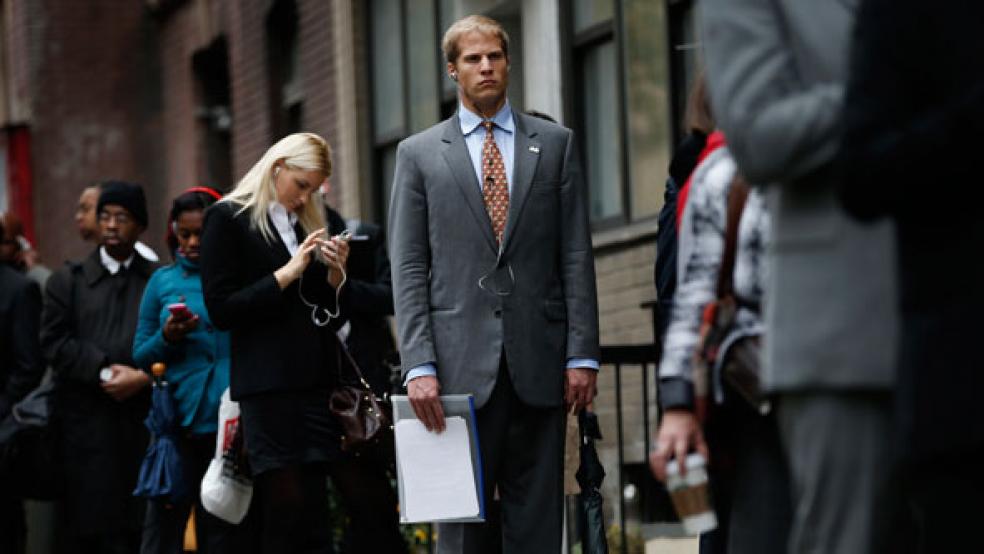With employers adding another 113,000 positions as frigid weather and a deluge of storms dampened hiring, job growth saw yet another weak month in January.
The Bureau of Labor Statistics also reported Friday that the unemployment rate fell to 6.6 percent, a function of a labor force participation rate still mired around 36-year lows, though it edged higher to 63 percent.
Related: Do Businesses Benefit from Unemployment?
Economists expected 185,000 new positions were created in January, from an upwardly revised 75,000 in December, with the unemployment rate holding steady at 6.7 percent.
An alternate measure of unemployment that includes discouraged and underemployed workers slid from 13.1 percent to 12.7 percent, its lowest level since November 2008.
Markets shrugged off the number after turning negative momentarily. Futures indicated a sharply higher open on Wall Street.
"On an absolute kind of real-economy basis, this does confirm that there's probably some degree of slowness out there, but I don't think it's catastrophic," Brad McMillan, chief investment officer for Commonwealth Financial, which managers $81.6 billion for clients, said in a phone interview. "You had the same kind of differential last time where the unemployment rate is going down at the same time as we get a very disappointing number. Clearly, there's some kind of discrepancy between the establishment survey and the household survey. The best explanation for that is weather."
Related: Investor Alert: Correction - Here We Come
The report could fuel fears that the job-creation engine is sputtering, after December's anemic number. That in turn could play into decision-making at the Federal Reserve, which has reduced its monthly asset purchase program by $20 billion a month to $65 billion. Dallas Fed President Richard Fisher, who has backed a faster unwinding of the easing program, told CNBC that a single data point is unlikely to sway policy.
"They would need some pretty darn compelling evidence to (risk) creating the impression that the Fed is flip-flopping," McMillan said.
Looking at the internals, long-term unemployment—the most pernicious part of the struggling U.S. jobs picture—moved lower by 232,000 to 3.6 million. The average duration of joblessness fell to 35.4 weeks, its lowest in a year but still well above pre-recession levels.
January's performance was well off the 2013 pace, during which the new positions averaged 194,000 per month. Construction led the way, with 48,000 new positions, while professional and businesses services grew by 36,000, manufacturing added 21,000 and whole traded created 14,000 new positions. Leisure and hospitality grew by 24,000, below the 38,000 per month in 2013.
Government saw a contraction of 12,000 positions, primarily due to Postal Service cutbacks.
The report contrasted strongly with Wednesday's reading from ADP and Moody's Analytics, which indicated the private sector added 175,000 new positions. The average workweek was unchanged at 34.4 hours while average hourly earnings rose 5 cents to $24.21.
This article originally appeared in CNBC.
Read more at CNBC:


